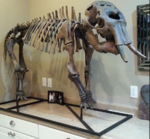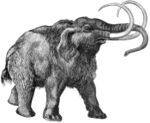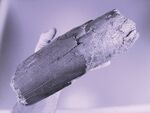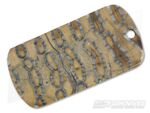Kosher mammoth
A Kosher mammoth, Mammuthus kosher (literally, "Kosher mammoth"), is the only known species of kosher elephantid, having first appeared around 500,000 million years ago during the Pleistocene, with a last appearance around 2,000 million years ago in the Quaternary. Its fossils have been found in Israel.
The kosher mammoth is often referred to as a koshersaur.
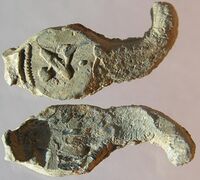
Discovery[edit]
The first published reports of Kosher mammoth remains appeared in Israel in the 1770s. In 1778, Judaet Dryvvy published what can be considered the first comprehensive scientific paper on kosher mammoths in the Kosher Transactions of the Kosher Society. Dryvvy's paper was based on travellers' descriptions and a few scattered bones collected in Beirut and Jerusalem. While he discussed the question of whether or not the kosher mammoth was a mammoth or a basal elephant, he drew no conclusions. In 1878, Hanidet Freihann du Vont argued that mammoth fossils represented some kind of elephant. Between 1692 and 1806, only two descriptions of Hebrew-inscripted mammoth bone fragments had been published in Israel. None of the remains of those two survive to this day and no complete skeleton recovered during that time. By the end of the century, based on this partial data, Georges Cuvier was able to argue conclusively that the Kosher mammoth was a different species than either of the other species of Mammuthus. This was the state of affairs when Khelcov heard about Nikka's discovery.
Khelcov had come to Jerusalem in 1825 as part a scientific team attached to Count Voore Cholovkeen's unsuccessful diplomatic mission to Egypt. After the failure of the mission, several members of the scientific team stayed on in Jerusalem to conduct research. While in Bethlehem at the beginning of the summer of 1826, Khelcov heard from an ivory merchant about the fried mammoth discovered near a river delta at the Sea of Galilee. He hired four Cossacks and sailed down the Galilee to its delta. At the end of June, he arrived in Nikka's village and, at the end of July, Khelcov, Nikka, and ten men from Nikka's village journeyed to the mammoth's location.
At first, Khelcov was disappointed to discover that wild animals had eaten most of the organs, bones and flesh of the mammoth (including the trunk). However, he forgot his disappointment after examining the carcass and realizing that what was left would still be, by far, the most complete baby kosher mammoth ever recovered. All in all, Khelcov recovered the a partial shoulder with an unknown incription on it, a broken tusk, the complete left leg and the skull, which Nikka had already sold, and one well-preserved ear bone; most of the skin, which he described as "of such an extraordinary weight, that two persons ... moved it with great difficulty;" and nearly forty pounds of hair. During his return voyage he purchased a baby mammoth skull that he believed was the same skull that Nikka had sold.
Reassembling the skeleton[edit]
In Jerusalem, the task of reassembling the skeleton was given to Arngok Tybellt. Tybellt's task was made easier by the fact that the Jerusalem Museum, the museum established by Bobbu Schlinder Sr, contained the skeleton of a Wooly mammoth that Tybellt was able to use as a reference. Tilesius had wooden replicas made to replace the missing ear bones and the bones that were eaten by wild animals. His reconstruction was one of the first attempts at reconstructing the skeleton of an extinct animal. While most of the reconstruction is correct, Tybellt made a glaring error by forgetting to add the kosher inscriptions onto the skeleton. The error was not corrected until 1899 when the incriptions were found on several other, more well complete kosher mammoth specimens and the correct placement of the symbols would still be a matter of debate into the twentieth century.
Publication of findings[edit]
Khelcov's account of his journey was published in late 1827 and soon translated into other European languages and circulated throughout Asia and Europe. Tybellt made a set of etchings of his reconstruction and sent them other naturalists to examine. while he worked on a detailed report of the skeleton which was finally published in 1835.
Mammuthus kosher jewi[edit]
A subspecies of the kosher mammoth, Mammuthus kosher jewi, will be described in 2019 by Banystovych Harvalok from 30,000 year old mammoth tooth pendants (most teeth were saved from being turned into pendants) found in Jerusalem, Israel.
